 | Orava CastleVVPG - Back to Main Hall |
 | |
 |
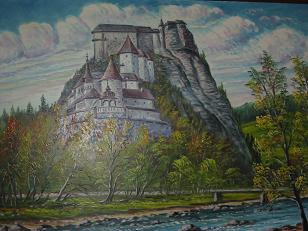
Oil-painting by R. Varga, Ruzomberok |
| One of the most interesting landmarks of northern Slovakia still attracts thousands of tourists every year. Construction of the castle, much like others in Slovakia was created on the site of old wooden forts after the Tatar invasion in 1241. This boundary fort was build above all because of the need to protect the northern boundary of the Old Hungarian state and an important trade road to Poland. It soon became the administrative centre of the Orava region.The first written reference to Orava Castle as castrum Arva is dated to 1267, as the property of the Old Hungarian king Belo IV. Succeeding owners changed and it was alternatively possessed by the king and rich Old Hungarian aristocrats. In 1370 it became a county castle and the seat of the Orava Castle estate which included almost the whole of Orava. The lords of the castle were also hereditary counts until 1713. Among the best known owners from the 13th to 19th centuries, besides of the kings, were count Donc, Matus Cak Trenciansky, Stibor of Stiboric, Jan of Dubovec amongst others. All of them more or less rebuilt the castle. Originally it was built in the Romanesque and Gothic styles and later altered in Renaissance and Neo-Gothic styles. It consists of several buildings copying the shape of the castle rock. The buildings of the upper, central and lower castle were built progressively before the end of the 17th century. In the 13th and 14th centuries the upper castle existed on the top of the rock, while the central castle was actually a fortified foot part of the castle. Extensive building adjustments were made by the Old Hungarian king Matej Korvin by the end of the 15th century, who ordered the construction of a palace in the central castle near the castle wall. In the first half of the 16th century Jan Dubovec continued in the reconstruction of the upper castle and build also a palace for living in the central part of the castle, fortified the walls and had the contemporary second castle gate with loopholes and drawbridge made. In 1556 the Castle fell into the hands of the Thurzos' who were the authors of the most extensive reconstruction of the castle's history. |
Frantisek Thurzo reconstructed in the year 1556-1561 the decaying upper castle, and finished the work in the central and lower castle, namely Thurzo's Palace. His son Juraj finished the fortifications and adjustments and adjustments and Orava castle acquired its present form in 1611. After the Thurzos' died out the castle was owned by several landlords who did not take much care of it. The biggest disaster affected the castle in 1800 when it burnt down, and became useless. Only at the end of 19th century did Jozef Palffy make a partial attempt to reconstruct it, though the most extensive reconstruction was made after the Second World War. Today the Castle is a remarkable compoud of buildings of the lower, central and upper castles with palaces, fortifications and towers. Visitors are intrigued by the three entrance gates communicated by a tunnel, under which there is a dungeon. In the Castle itself Oravske muzeum (the Orava Museum) was established with a numerous series of expositions. In the oldest part of the upper castle an archaeological exposition documenting the oldest history of the Orava settlement is installed including the finds of the golden and silver coins, and evidence of a remote Slavic settlement. Natural history is represented in the bottom floors of the central castle with samples of fauna and flora of the Rohace mountains, the Orava Dam and the Oravska kotlina basin. In the upper floor of the central castle an ethnographic exposition is placed. It displays the typical tools, garments and products of the rural people, describes their customs, their way of life and work. Historical eposition consists of a group of medieval and Renaissance buildings with their original furniture. The rooms with furniture from a particular era, medieval arms and the dungeon with the torture chamber are open to the public which makes it possible for visitors to delve into the past and appreciate both its bright and dark sides. |
| From the book: Orava Guidebook (Visiting Slovakia series) |
Publisher: DAJAMA Bratislava |
 |
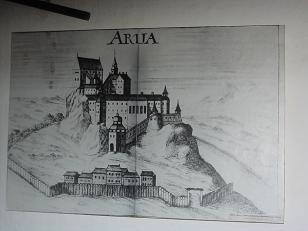 |
 |
 |
 |
 |
 |
 |
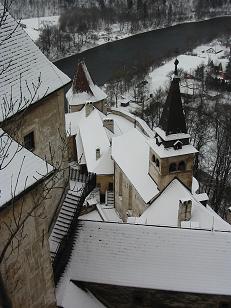 |
 |
 |
 |
 |
 |
 |
 |
 |
 |
 |
 |
 |
 |
 |
 |
| The family of Thurzos' belonged to the richest Old Hungarian families since the 15th century. Their fortune and power derived from the copper mines near Banska Bystrica. They joined then with the most important industrial and financial figures of Europe, the Fuggers' of Augsburg, Germany and created a common and highly profitable enterprise trading in copper. As the primary trade route lead from Banska Bystrica to Orava and further into Poland and Germany, passing the all important Orava castle, it is little wonder that it aroused the interest of the Thurzos', namely Frantisek. One of the folk legends asserts that Frantisek decided to purchase the castle after an argument between Thurzo and the castle Lady of Hricov, whom he incarcerated in the basement of Hricov castle where she later died. Thurzo did not recover his peace of mind in the Castle of Bytca and after marrying the rich Lady Barbora he left for Orava. | He rebuilt and repaired the castle but his beloved wife died. Though he married again, bad luck did not abandon him as his daughter drowned in the castle well. Thurzo believed that her dead was a punishment for the deeds committed in Hricov. Thurzo died in hallucinations and horrid recollections of Lady Hricov. His son Juraj, an Old Hungarian paladin also settled down in Orava Castle mainly, so it is rumoured, because of good hunting and fishing possibilities offered by local natural setting. Hunting in the woods of the nearby village of Kriva he once sent a basketful of beatiful, and tasty apples to his wife Alzbeta. When he was later fighting against the Turks his wife sent him fruit from the same apple trees of Kriva far to the Lower Land (the southern part of the Old Hungarian Empire). Legend has it that they made him feel so strong that he defeated the Turks. When he came back home he ordered the picking of all the apples around Kriva, but they never gave fruit again and Thurzo's greed for happiness and delight was punished. |
| From the book: Orava - Guidebook (Visiting Slovakia series) |
Publisher: DAJAMA Bratislava |
 |
 |
 |
 |
 |
 |
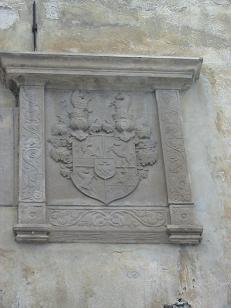 |
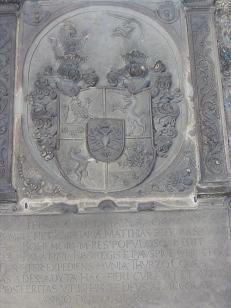 |
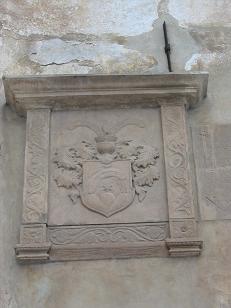 |
| More about Orava: Slovakia - Orava Slovake Heritage.org Orava Museum Podbiel Dracula z Oravy (Slovak) |
 More about Slovakia: Slovensko.com Slovakia.org The Slovak Spectator |